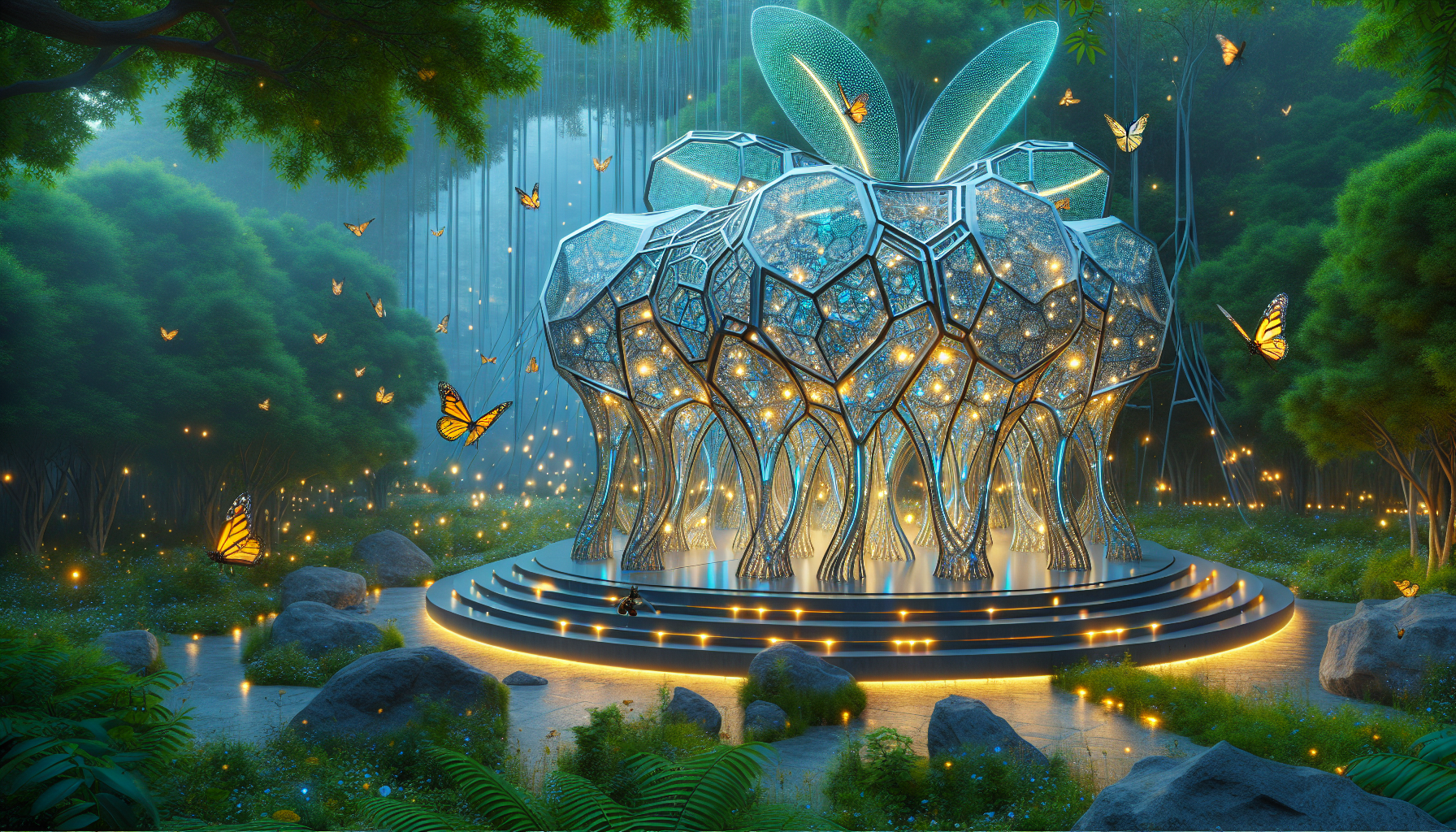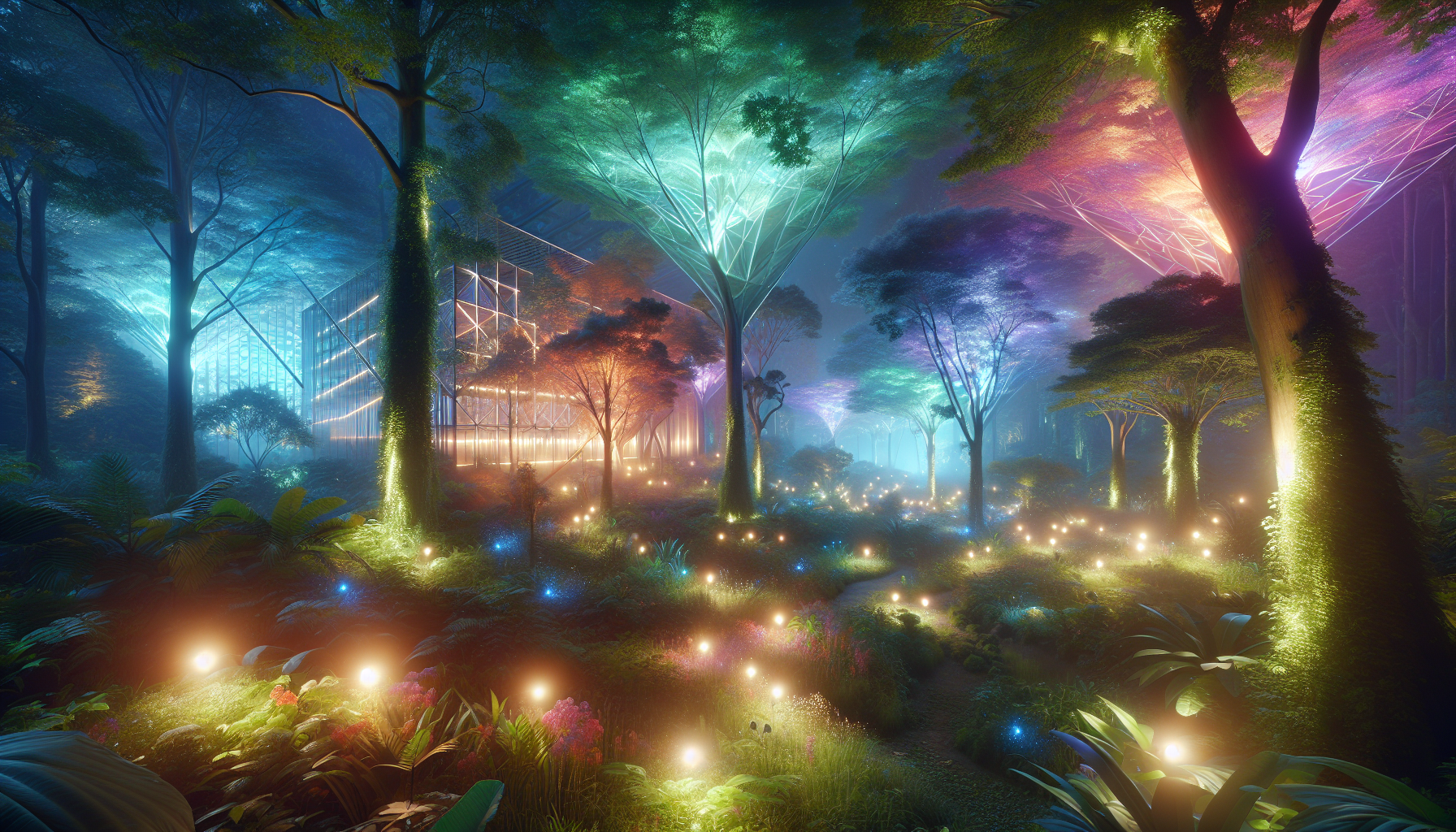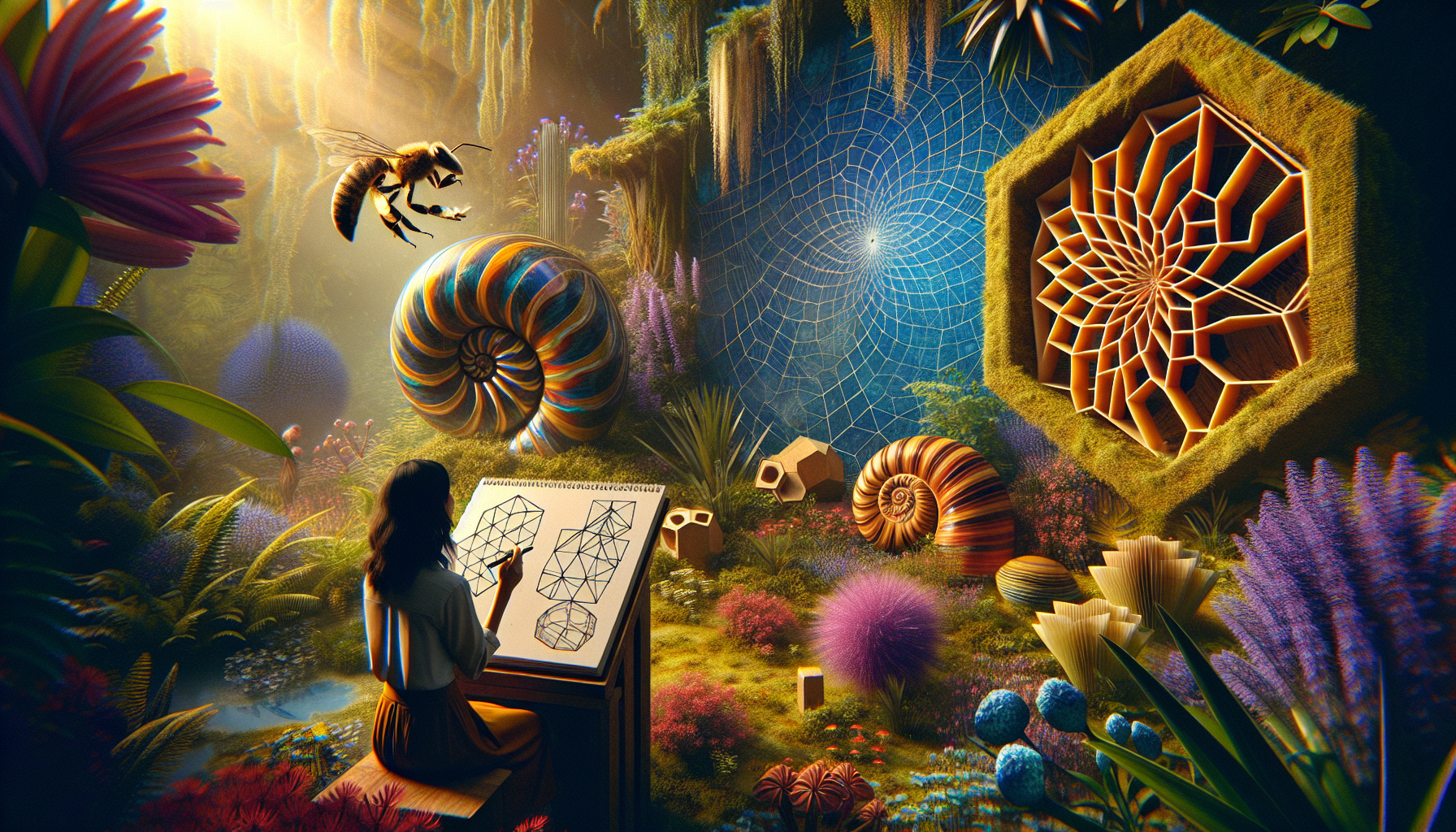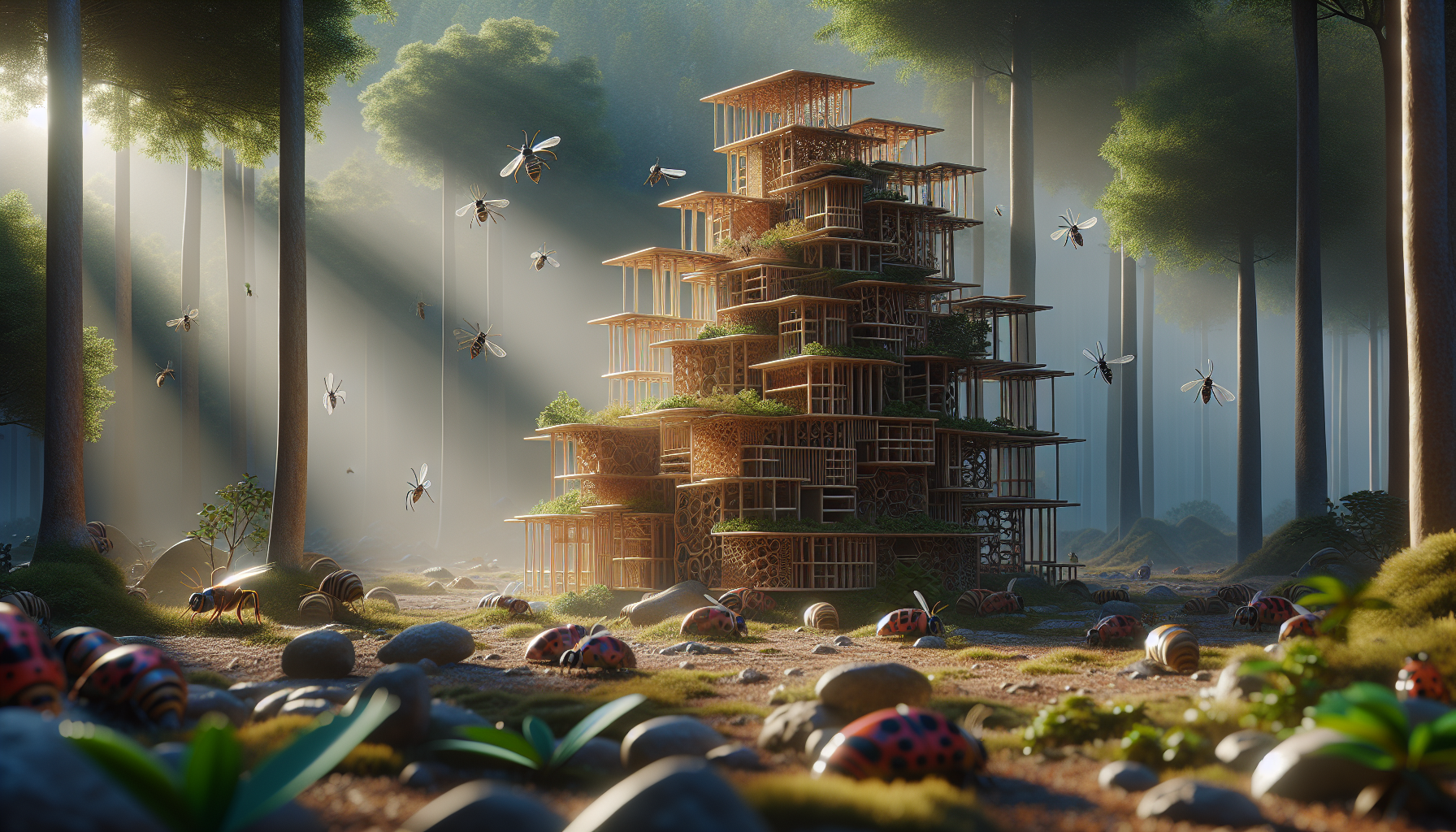In the vast and intricate tapestry of the natural world, one of the most mesmerizing phenomena is the way certain structures can attract specific creatures. Imagine a design so ingenious that it could entice precisely the right kind of insect, playing into the delicate balance of ecosystems. Welcome to the fascinating world of microstructural design, where science meets nature in an elaborate dance of attraction and adaptation. Our journey today will take us through the intriguing corridors of “Firefly Architecture,” a pioneering concept that has successfully captivated various insect species. This innovative design is not just about luring bugs; it is about understanding the complexities of nature and leveraging these insights to create something truly groundbreaking.
Microstructural design is a burgeoning field of study that focuses on manipulating small-scale structures to achieve specific functions. In this context, Firefly Architecture emerges as a beacon of innovation. Inspired by the natural luminescence and intricate patterns of firefly exoskeletons, researchers have embarked on a quest to replicate these biological designs to influence insect behavior. This endeavor is not just about aesthetics; it’s a meticulous scientific process involving physics, biology, and a deep understanding of insect ecology. By crafting structures that mimic the light-diffusing and attracting properties of fireflies, scientists aim to create environments that can selectively attract certain insect species, thus offering potential solutions in agriculture, pest control, and biodiversity conservation.
The implications of successfully designing such microstructures are profound. Imagine a world where we can encourage the presence of beneficial pollinators in agricultural settings or divert pests away from crops without the need for harmful chemicals. With Firefly Architecture, we can potentially develop eco-friendly and sustainable strategies that align with natural processes. In this article, we will delve into the intricacies of this innovative design, exploring how it successfully attracts different types of insects. From the principles of biomimicry that underpin this concept to the practical applications that could revolutionize industries, we will uncover the myriad possibilities that lie at the intersection of design and nature.
Join us as we illuminate the path of discovery in this captivating field. We will explore the science behind Firefly Architecture, breaking down the methodologies used to create these microstructures and examining case studies where they have been implemented with remarkable success. Through this exploration, we aim to shed light on how such designs could herald a new era of ecological harmony and innovation. So, prepare to be captivated by the world of fireflies and microstructures, where the glow of tiny lights could hold the key to a brighter, more sustainable future. 🌿✨
Understanding Innovative Microstructure Design for Insect Attraction
In recent years, there has been a growing interest in the development of innovative microstructures designed specifically to attract certain types of insects. This field of research, often referred to as biomimetic engineering, seeks to understand the natural mechanisms and patterns that insects respond to and replicate them using advanced materials and technologies. One of the most exciting developments in this area is the architecture of Firefly-inspired structures, which have shown remarkable success in attracting a wide variety of insects.
The concept of biomimetic design is not new, but its application in microstructure development for insect attraction is groundbreaking. By closely examining the physical characteristics of fireflies and other bioluminescent organisms, researchers have been able to identify specific traits that make these creatures highly attractive to other insects. These traits include not only the unique light-emitting capabilities of fireflies but also their surface textures and structural compositions. This research has led to the creation of new materials and designs that can effectively mimic these natural characteristics, providing a potent tool for pest control and environmental monitoring.
The Architecture of Firefly: Success with Different Types of Insects
The Firefly-inspired architecture represents a major breakthrough in the field of insect attraction. By analyzing the light patterns and structural characteristics of fireflies, researchers have developed a design that is not only effective but also versatile in attracting various insect species. The success of this design can be attributed to its ability to replicate the natural signals that insects respond to, thus making it a powerful tool for both pest control and biodiversity studies.
One of the most significant achievements of the Firefly architecture is its ability to attract a diverse range of insect species. This versatility is achieved through the use of multiple microstructures that can emit different wavelengths of light and mimic the surface textures of various insects. This allows the structure to target specific insect populations based on their unique preferences and behaviors. As a result, the Firefly architecture has been successfully used in a variety of applications, from agricultural pest control to ecological monitoring.
The table below provides a comparative analysis of the Firefly architecture’s effectiveness in attracting different insect species. This analysis highlights the versatility and efficiency of the design in various environmental conditions:
| Insect Species | Attraction Efficiency | Environmental Conditions |
|---|---|---|
| Beetles | High | Humid, Low Light |
| Moths | Medium | Dry, Moderate Light |
| Butterflies | Low | Sunny, High Light |
As shown in the table, the Firefly architecture is particularly effective in attracting beetles in humid and low-light environments. This is due to the design’s ability to replicate the natural light emissions and surface textures that beetles are drawn to. In contrast, the architecture is less effective in attracting butterflies, which prefer sunny and high-light conditions. This information is crucial for optimizing the design for specific applications and ensuring maximum efficiency.
For a visual representation of how the Firefly architecture works, check out this video titled “Biomimicry: Firefly Architecture in Action” from the Biomimicry Institute. This video provides a comprehensive overview of the design and its application in various settings. Watch it to gain a deeper understanding of the innovative approach to insect attraction.

Conclusion
Crafting innovative microstructures to attract specific insects is a groundbreaking field that marries biology, engineering, and design. Throughout this article, we’ve journeyed through the intricate architecture of the Firefly design and explored its remarkable success in attracting a diverse array of insect species. Let’s recap the pivotal aspects discussed and delve into why this field holds such significance.
The Firefly architecture, as we explored, is a marvel of bio-inspired design. Rooted in a deep understanding of insect behavior and sensory perception, these microstructures are crafted to mimic natural environments. By doing so, they effectively draw specific insect species, creating new possibilities for ecological studies, pest management, and even the promotion of pollination. The precision in design, down to the nanometer, demonstrates an impressive confluence of art and science that challenges our traditional approaches to interacting with nature.
One of the key points we highlighted is the role of biomimicry in the design process. Biomimicry not only inspires the shapes and structures that attract insects but also ensures that these designs are sustainable and eco-friendly. By closely mimicking nature, these microstructures can be integrated into existing environments with minimal disruption, offering a harmonious solution to human-insect interactions.
Moreover, we discussed the technological advancements that make such precise designs possible. The intersection of materials science and nanotechnology has opened doors to crafting these intricate structures with unprecedented accuracy. The Firefly design stands as a testament to what is achievable when cutting-edge technology meets nature-inspired creativity. This synergy has led to innovations that could revolutionize fields ranging from agriculture to urban planning.
The ecological implications of these designs cannot be overstated. By attracting specific insects, these microstructures have the potential to control pest populations naturally, reducing the need for harmful pesticides. They also hold promise for enhancing pollination in both natural and agricultural settings, which is critical in the face of declining bee populations worldwide. The Firefly architecture, therefore, presents a sustainable approach to addressing some of the pressing environmental challenges of our time.
Furthermore, the cultural and economic impacts of such innovations are profound. By fostering environments where beneficial insects can thrive, we support biodiversity, which is crucial for healthy ecosystems. Economically, this can lead to more robust agricultural yields and a reduction in crop losses due to pests, thereby supporting food security and stability.
In essence, the Firefly design and similar innovations are not just about attracting insects; they are about fostering a balanced coexistence with nature. They represent a shift towards more sustainable practices that respect and harness natural processes. This approach could redefine our relationship with the environment, emphasizing cooperation over domination.
As we conclude, it’s essential to reinforce the importance of continued research and innovation in this field. The potential applications are vast, and the benefits to ecosystems and human society are significant. By supporting and investing in such research, we pave the way for a future where technology and nature coexist in harmony.
We invite you to reflect on the ideas presented and consider their implications in your own context. How might the principles of the Firefly design be applied in your field or community? We encourage you to share your thoughts and insights, fostering a broader conversation about sustainable design and innovation.
Moreover, spreading awareness is crucial. Share this article with your peers, friends, and networks. The more people engage with these concepts, the greater the collective impact we can achieve. Together, we can inspire a shift towards more sustainable and innovative solutions to the challenges we face.
In conclusion, the innovative design of microstructures like the Firefly architecture represents a beacon of possibility in our quest for sustainable interaction with the natural world. It’s an invitation to rethink our approaches, to innovate with purpose, and to create solutions that are as beautiful as they are functional. Let’s embrace this challenge with open minds and a commitment to a better, more harmonious world. 🌿
For further reading and to explore related research, consider these resources:
– Journal of Insect Science
The path to innovation is one we walk together. Let’s continue to explore, learn, and create a future where humans and nature thrive side by side.
Toni Santos is a visionary artisan and conceptual designer who channels the beauty of living organisms into structural expression. At Zureste, Toni explores the intricate elegance of insect anatomy, organic flow, and bioinspired design to create art that feels both natural and otherworldly.
Each creation Toni brings to life reflects a harmonic tension between structure and softness, wildness and control — echoing the complex intelligence found in the natural world. From beetle-like silhouettes to root-shaped contours, his work blurs the lines between biology, sculpture, and modern art.
Guided by fascination for metamorphosis, evolution, and pattern in nature, Toni’s pieces embody transformation. His BioLight Collection and conceptual series like Insect Type and Structure Aesthetics offer viewers more than aesthetic value — they present immersive experiences of living design.
As the creative force behind Zureste, Toni invites us to rethink beauty, architecture, and identity through a new lens — one shaped by wings, bones, spirals, and the microscopic poetry of the organic.
🌿 His creations reflect:
-
Design deeply rooted in the geometry of life
-
Inspiration from insects, roots, and the unseen natural order
-
A blend of science, spirituality, and visual storytelling
Whether you’re a lover of strange beauty, an admirer of evolution’s artistry, or a creative mind seeking something different, Toni welcomes you into a world where living forms become meaning, and surreal becomes sublime.





